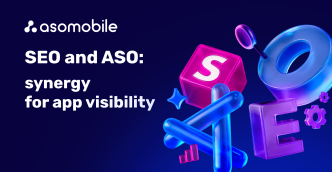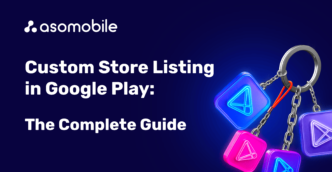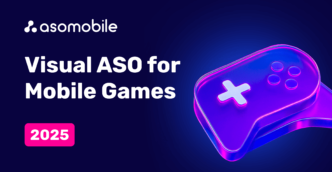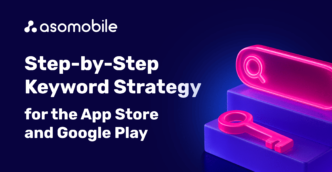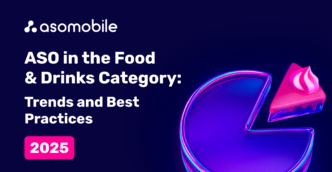App Store Product Page Optimization
Today, our focus will be on the App Store Product Page of iOS applications and the process of optimizing them. We already covered this topic a little in the article about A/B testing, and here we will take a closer look at the process of creating a Product Page, goals, and mistakes that should be avoided.
With the advent of PPO (Product Page Optimization), this has become as much a mandatory element of ASO optimization for iOS apps as using additional locales to expand indexing. Let's figure out what it is and what it is like. The very first analogy of the Product Page is A/B testing, and rightly so. Product pages are our opportunity to test creatives, icons, screenshots, and previews to determine the best option to attract users.
What is an App Store Product Page?
At the annual Apple conference in 2021, the Product Page was announced, and already after a certain period, we can identify the main points of using them with maximum efficiency.
What is PPO, in a nutshell?
- This is a kind of a/b test from App Store Connect.
- It is possible to create various options for the app page, including seasonality, localization, and visual elements.
- Possibility of PPO appearance in Today, Games, and Apps tabs.
- If a user installed our app from an experimental page, the test icon (from which the installation took place) will also be displayed on their device.
- When creating a Product Page, we specify the number of experiments, traffic volume, and localization. Only one test can be activated for up to 90 days.
How to create a Product Page?
Running an A/B test starts in App Store Connect, Features, and Product Page Optimization, where we create the test
We assign a name to the experiment for the convenience of finding it - we recommend that you create understandable test names to avoid confusing yourself. Alternatively, part of the name can be a specific element being tested (Icon, preview, screenshots). Our test name can be up to 64 characters long.
And choose the number of treatments for test pages - a maximum of three. And remember, the more attempts, the longer the test will last.
The proportion of traffic is the percentage of users that will be directed to the page being tested, if we chose 3 attempts and 30% traffic, then each version will account for 10% of the total users.
Page localization - we select the languages we want to include in the test, keeping in mind that all languages our app supports will be selected by default.
Estimate test duration - this way, we will get a time estimate according to the selected parameters and the given conversion rate. App Store Connect will provide these metrics based on existing data about our app's performance, such as daily impressions and new downloads. As a result, we will get the recommended duration and number of impressions. The test can run for up to 90 days but can be stopped manually at any time.
Now let's move on to our product page itself.
By default, product page test cases include initial metadata and visual elements such as an icon, screenshots, and previews, unless we provide otherwise. Now you need to decide what exactly will be tested - remember the rules of a/b tests, which say: one experiment = one element; otherwise, it will be very difficult to interpret the changes and their impact. Remember that the more options we include in a test, the longer it may take to get the final results.
Before launching the test pages, all metadata must be moderated and approved, a new build is not required. If we simply change the location of screenshots or previews, for example, put them in a different order without updating, then moderation and approval are not required.
Technically, these are all the steps you must go through to create an experiment called Product Page on the App Store.
How to measure the effectiveness of PP optimization?
App Store Connect analytics will provide all the necessary data during our testing. We will see the indicators of the original product page and three test pages, we can compare and draw the necessary conclusions about their impact on conversion.
If the result of our experiments is a new icon, then it should be implemented on the base page of the app. This can be done directly from PPO by selecting and applying the required test case in the source metadata. The data will be moderated, and our page will become even more attractive to target users.
Product Page and new app localization
In our article about the peculiarities of localizing an app on the App Store, we examined the cases of expanding geography - from the peculiarities of interface translation to simple page localization on the store. The Product Page will be a great tool to test our ideas and creatives for different countries. Since App Analytics won't tell us specifically what region the data is coming from, we'll specifically run tests for one country or region at a time.
Features of Product Page Optimization
Like any tool, PPO will be most effective when used correctly, so we must consider a number of limitations that are inherent in this testing approach:
- One test at a time. As mentioned, it is impossible to structure information efficiently regarding geography, so we are limited to one geo per test when testing localization.
- Only visual elements. PPO is designed only for testing icons, previews, and screenshots, text metadata is not a text object.
- The minimum test period is 1 week. In seven days, we can test visual elements for one locale. If we are interested in several countries, we must be patient.
- There is only one traffic source. When experimenting with PPO, we will receive all the traffic to the main page minus the allocated share of the test.
- Moderation for each Product Page. Just a slight adjustment to the time factor since, with many experiments required, passing the test affects the speed of all processes.
- iOS 15 and above users. This is not a problem, you just need to consider that some users will fall out of our experiment.
- New release - stop testing. If a new release happens during the testing process (fixing critical bugs or any other reason why the new build cannot be postponed), all our tests automatically stop.
- All tested versions must be unique; hence this precludes A/B/B testing.
A/B test rules = PPO rules
Like any testing, the optimization of the product page will be subject to the primary factors, taking into account which we will get a more accurate result of the experiment:
- choose what to test. These elements should differ from versions of each other so clearly that there is no question about the interpretation of the result.
- stable and sufficient traffic. If we launch an advertising campaign during testing, we will get a distorted picture. The same applies to seasonal or holiday spikes or drops in traffic.
- has a clear idea of what we are testing and what we expect. We avoid just sorting through the options because it is time-consuming and costly (the first goes, and the second one is not added while we are testing). Therefore, we start any test with a clearly formulated hypothesis - if we change the screenshots from a dark theme to a light one, the conversion will increase by 12% (this is an assumption, but it is clear what to focus on).
- the confidence interval of the test is 90%. It is worth keeping in mind that one case out of 10 will show us a false positive conversion result.
Final Thoughts on Product Page Optimization
The App Store PPO is a great, native a/b testing tool that will help guide our efforts to expand the geography of our application and attract new users in the right direction with minimal cost, but certainly not with minimal effort.
PPO will help us in solving the following tasks:
- Determine which icon is the most attractive to users.
- Choose which screenshots interact with users with the best results.
- Find out if the preview is working and if engagement is increasing.
- To form an understanding of different target audiences depending on geography.
- Determine what works best: seasonal content or features.
- Help us move from hypotheses and predictions to solutions and numbers.
 Українська
Українська  Русский
Русский  Español
Español 
